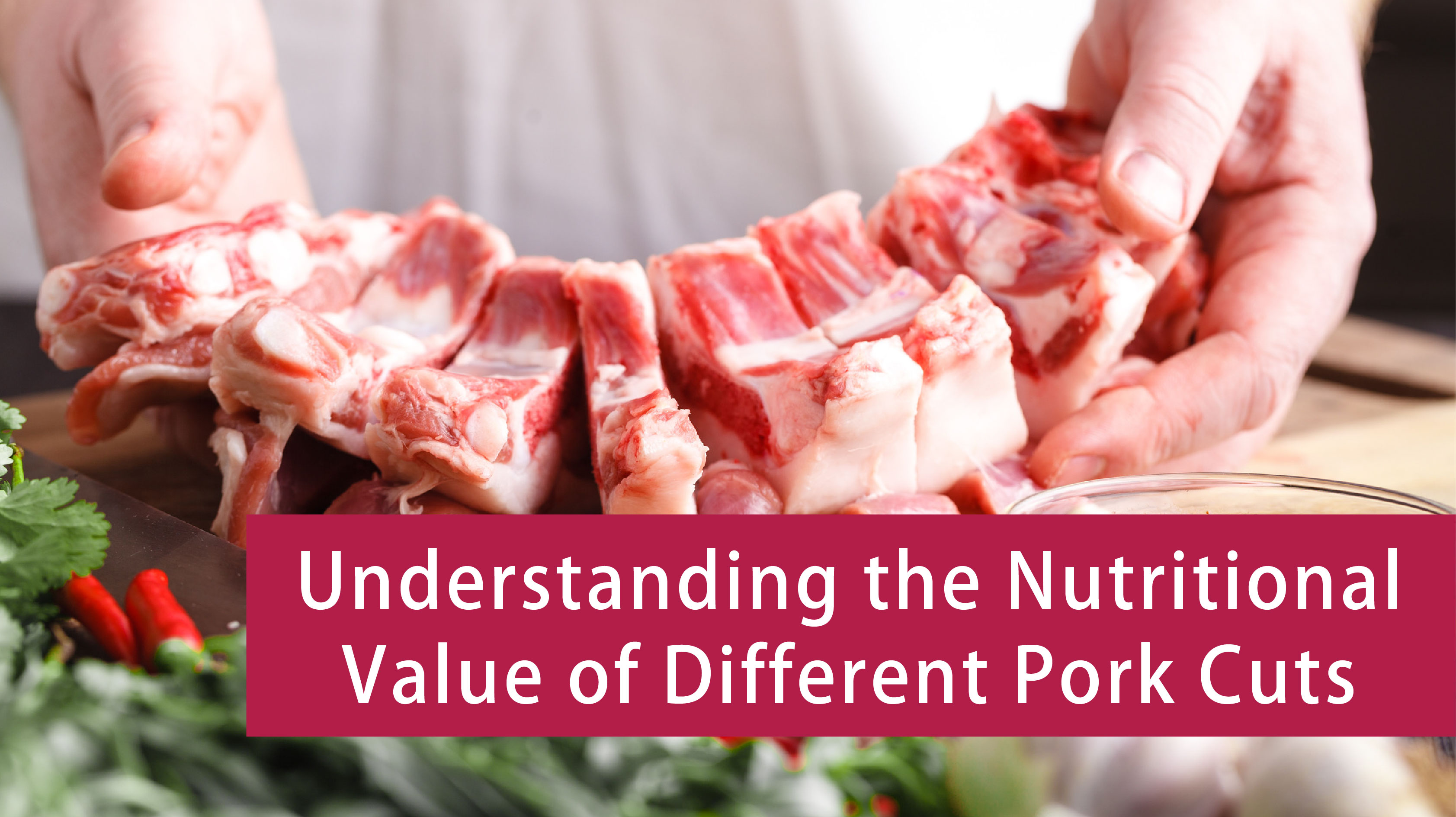13 August 2025
While pork is often seen as fatty, some cuts are actually quite lean. In fact, pork can be a great source of high-quality protein and low in fat, depending on which cut you choose. If you've ever stood in front of a butcher's stall or supermarket meat counter feeling unsure about which part of pork to buy, you're not alone.
Different cuts of pork come from different parts of the pig. Each one varies in texture, taste, and nutritional content. Do you know which pork cuts are the leanest, most tender or most popular? Let's take a look at the most common ones and see which suits your needs best.

Which Cuts Are the Leanest and Most Tender?
• Tenderloin: This is the meat from the pig’s back. It’s one of the leanest and most tender parts, with low fat and high protein content.
• Ham (Hind leg): Taken from the pig’s thigh area. This cut is meaty and lean, offering a firm texture, low fat content and plenty of protein.
These two cuts are ideal for people trying to reduce body fat or follow a high-protein diet.

Which Cuts Are the Most Popular?
• Pork belly (or three-layer meat): This comes from the belly area and has layers of fat and lean meat. It's perfect for stir-frying, braising, roasting, or hot pot, but is high in fat and calories, so it’s best enjoyed occasionally!
• Boston butt: Contains both lean and fatty parts. It has a balanced flavour and texture, with slightly less fat and calories than pork belly. It serves as a good choice for hot pot!
Don’t Overlook These Parts:
• Pork ribs: A good source of protein with moderate fat. They make flavourful soups that are both tasty and nutritious.
• Pork hock: Known for their chewy, gelatinous texture. Although rich in collagen, these parts are also high in fat, and the body doesn’t absorb the collagen easily due to its large molecular size. So, they are best enjoyed occasionally.
Tips for Choosing Fresh Pork:

1. Colour: Look for meat with a light pink-red tone and a natural shine
2. Elasticity: Press gently and check if it bounces back quickly
3. Smell: Fresh pork has a light, meaty smell, with no strong or sour odour
4. Touch: It should feel clean and not sticky to the touch
Plant Protein is a Great Option Too!

Pork is an excellent source of protein in our daily life. It not only contains B vitamins, but also minerals like iron, phosphorus, and selenium that are essential to the human body. When eaten in moderation and paired with vegetables and whole grains, it can be part of a balanced diet!
However, protein doesn’t only come from meat. Plant-based sources like beans, nuts, whole grains, and certain vegetables are also rich in protein. Compared to animal protein, plant protein is lower in fat, cholesterol-free, and high in fiber and phytonutrients, making it a good choice for those managing their weight or blood pressure. That said, animal proteins tend to be absorbed more easily by the body and contain key nutrients like vitamin B12, iron, and vitamin D, which are not as abundant in plant sources. However, they also contain more saturated fat and cholesterol, so it’s important to watch your portion sizes. A balanced intake is essential for good health.







